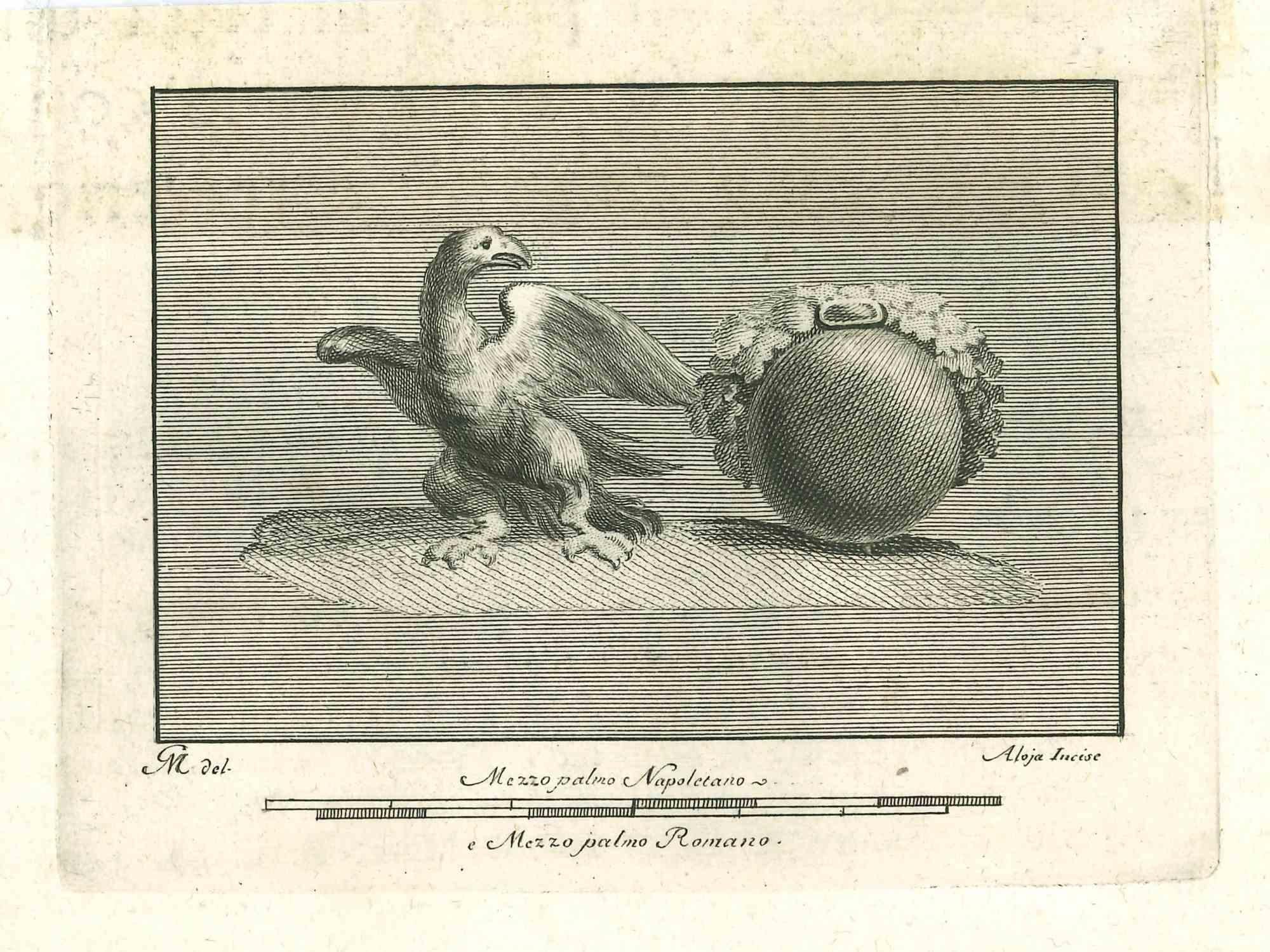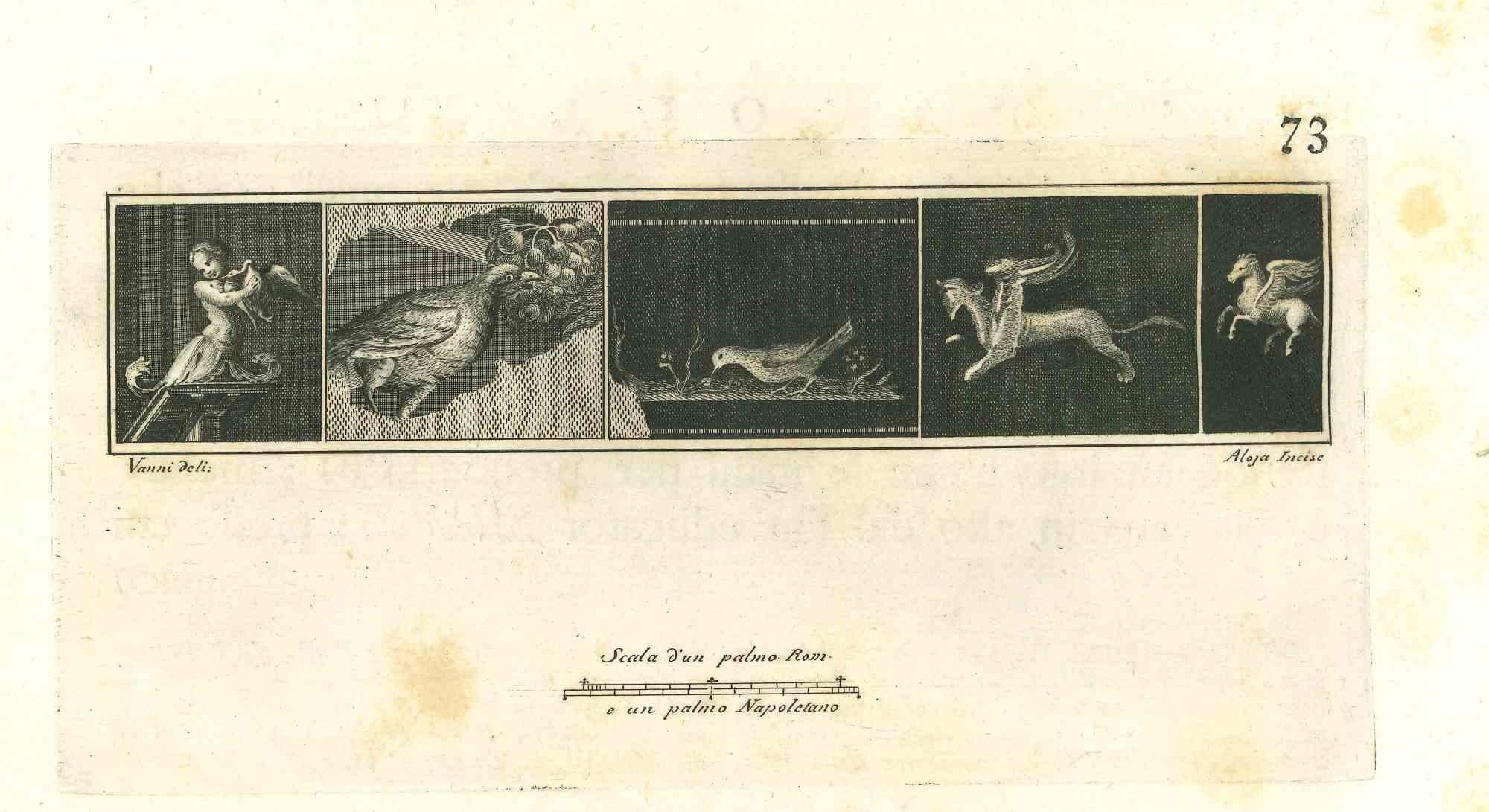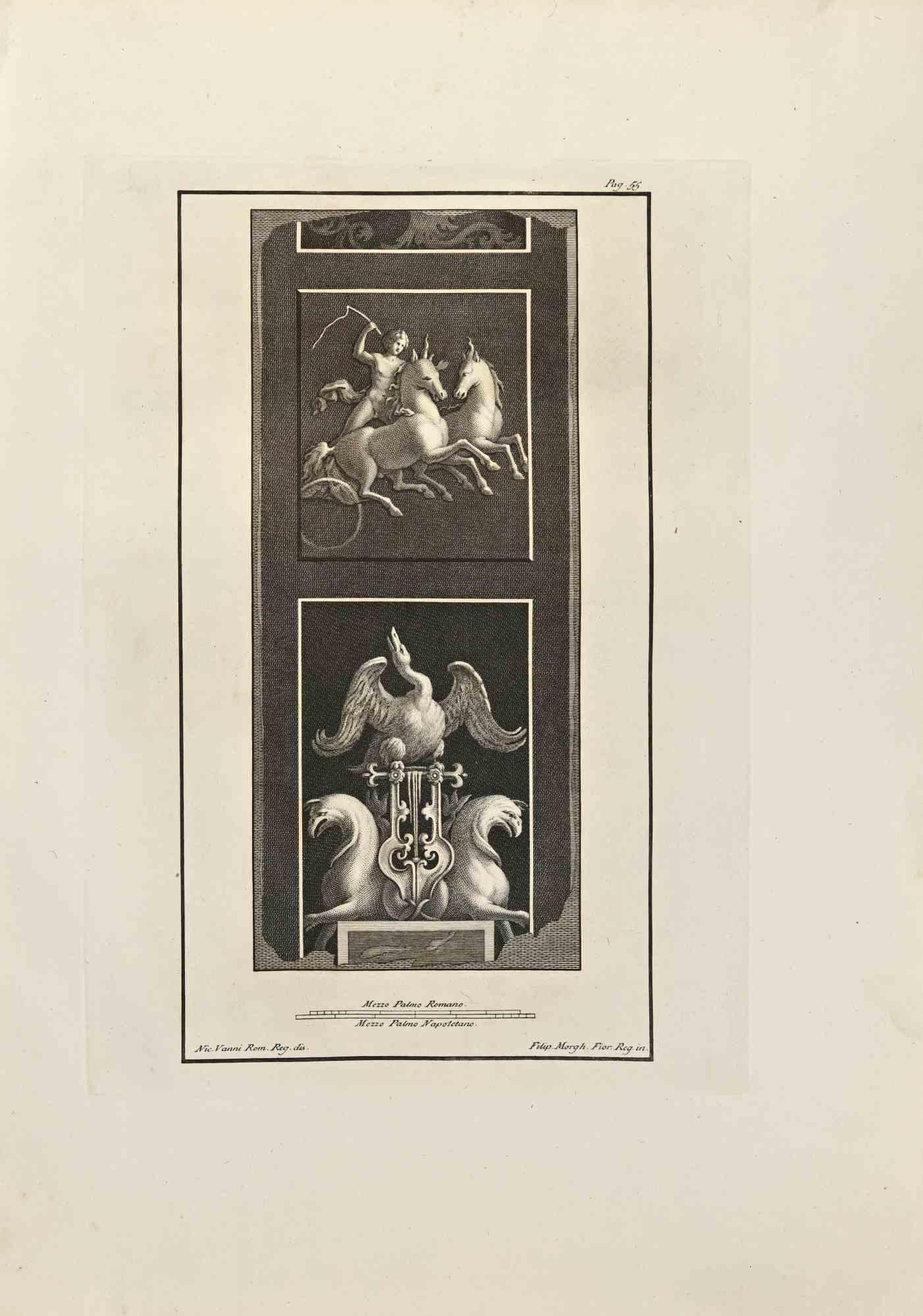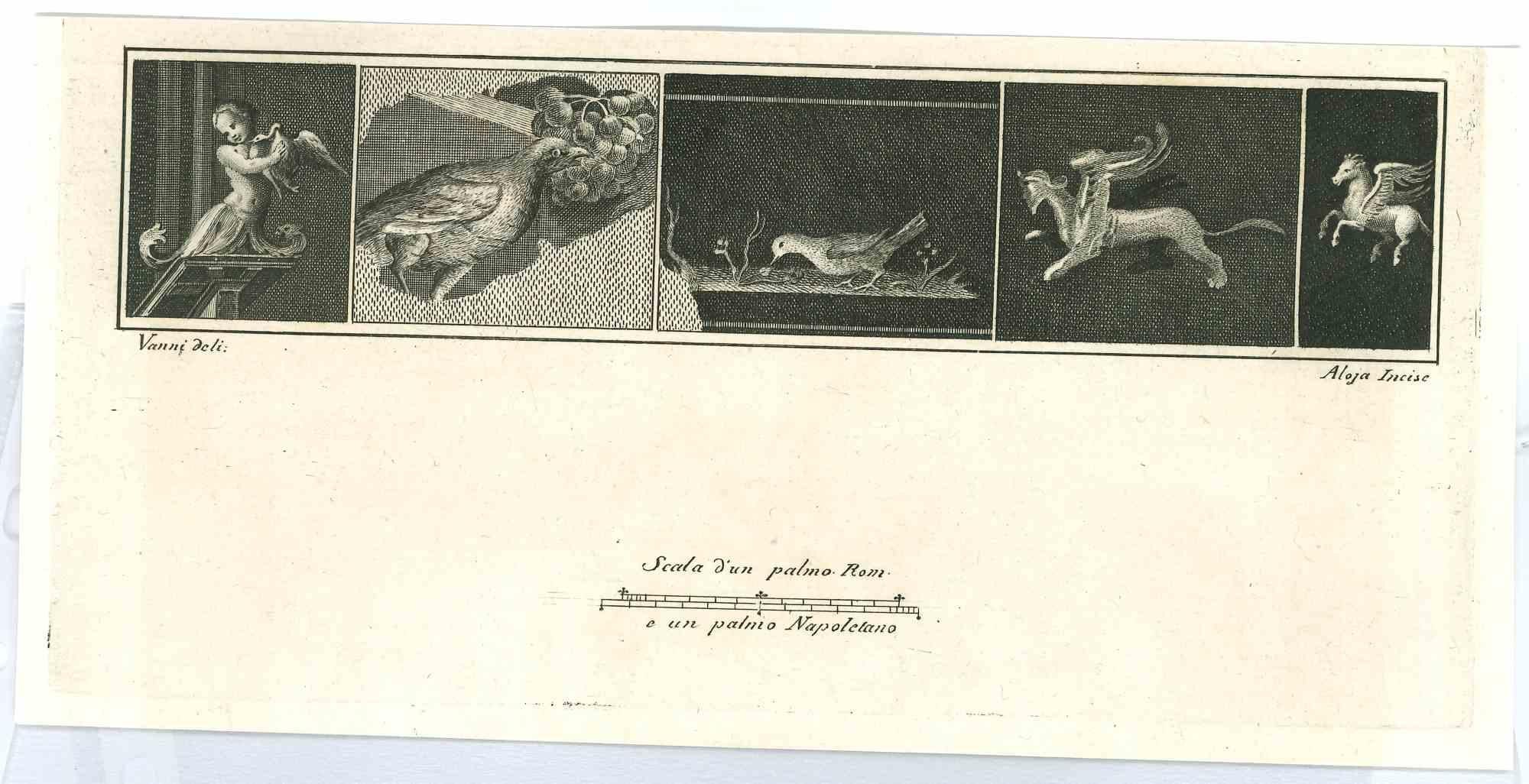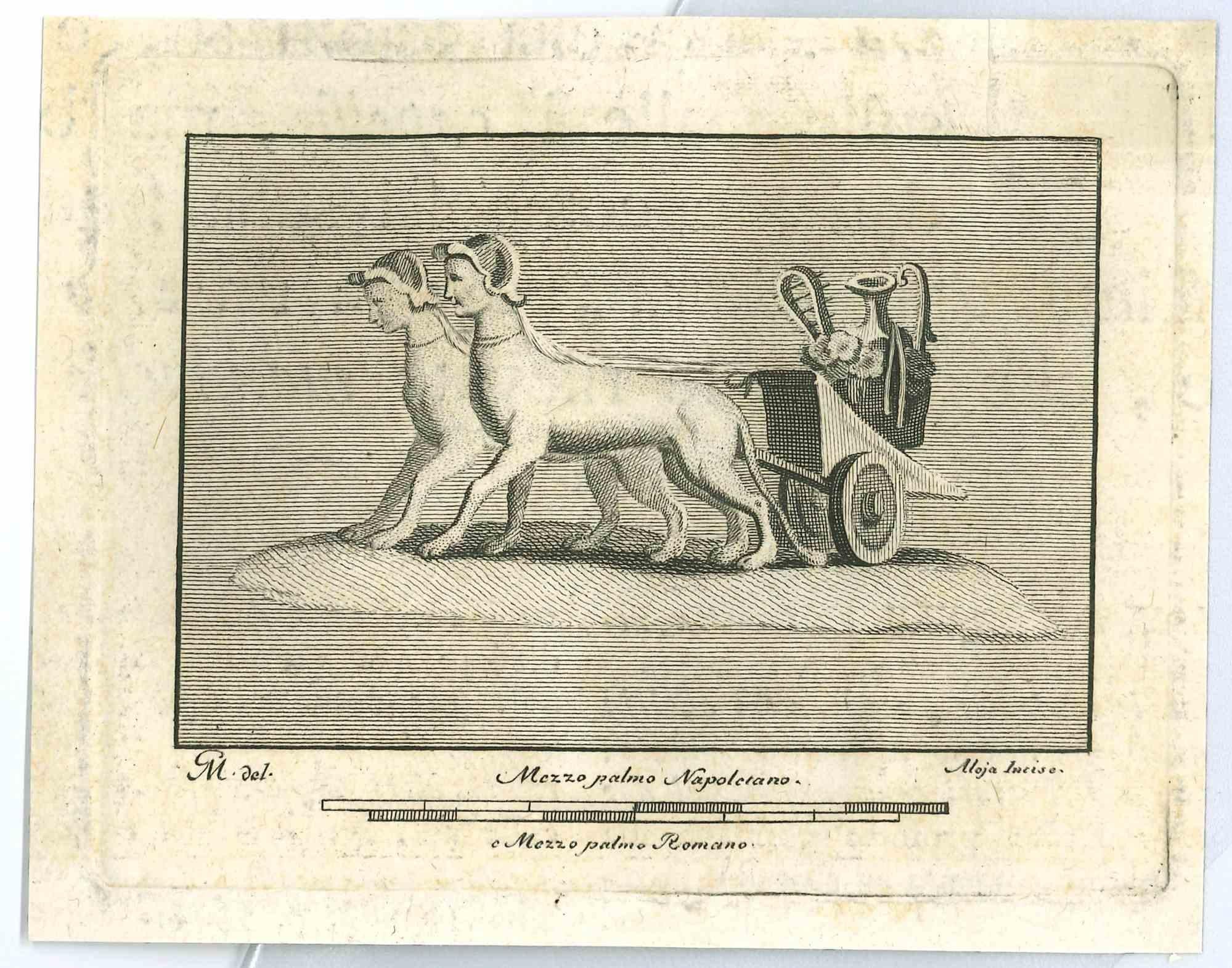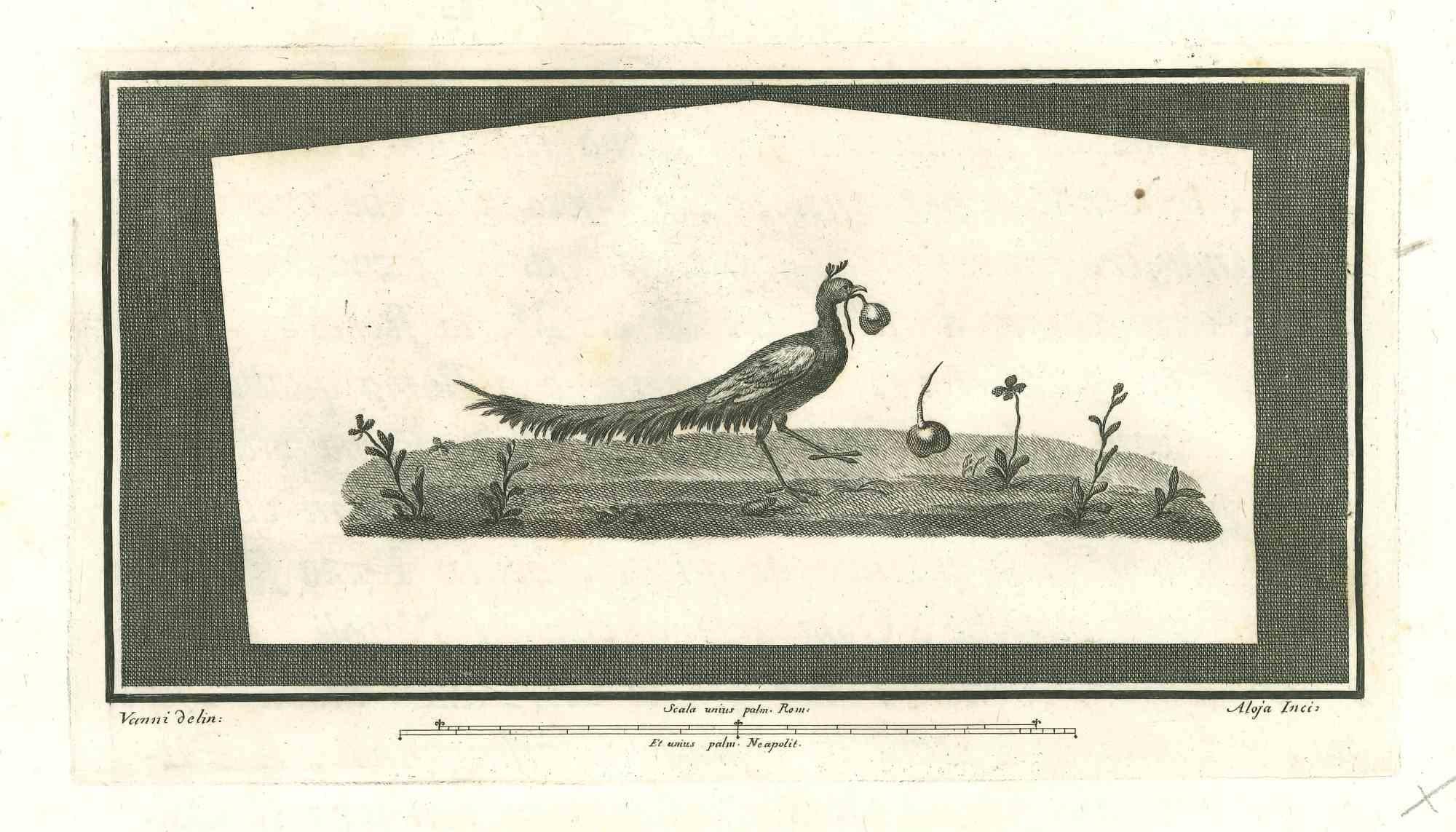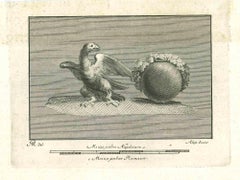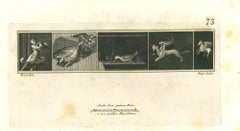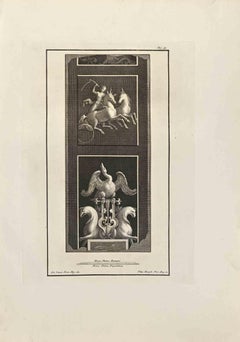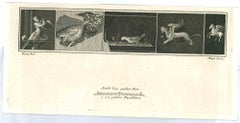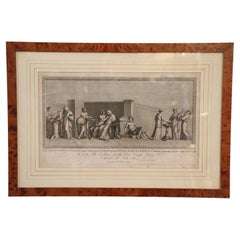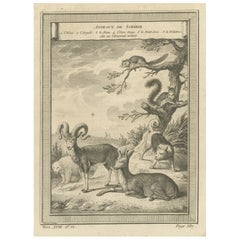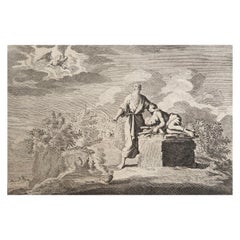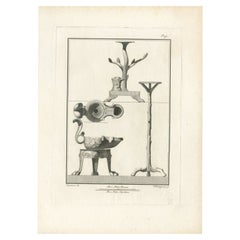Articles similaires à Hippogriffs - Gravure originale de Vincenzo Aloja - 18ème siècle
Vous voulez plus d'images ou de vidéos ?
Demander au vendeur plus d'images ou de vidéos
1 sur 2
Vincenzo AlojaHippogriffs - Gravure originale de Vincenzo Aloja - 18ème siècle18th Century
18th Century
460 €
À propos de cet article
Hippogriffs from Antiquities of Herculaneum is an original etching on paper realized by Vincenzo Aloja in the 18th century.
Signed on the plate on the lower right
Bon état.
The etching belongs to the print suite “Antiquities of Herculaneum Exposed” (original title: “Le Antichità di Ercolano Esposte”), an eight-volume volume of engravings of the finds from the excavation of the ruins of Herculaneum in the Kingdom of Naples (now Campania, Italy).
It was published between 1757 and 1792 by the Regia Stamperia, and copies were delivered to selected recipients across Europe.
Despite the title, the Antiquity of Herculaneum shows objects from all the excavations undertaken by the Bourbons in the Gulf of Naples. These include Pompeii, Stabia and two sites of Herculaneum: Resina and Portici.
The Bourbon King Carlo appointed fifteen scholars creating a new “Herculaneum Academy” to study the artifacts and publish the results of the archaeological excavations of the sites.
The engravings are of high quality and the accompanying text shows a large scholarship.
They were realized by 25 prominent artists involved by the King to prepare drawings and engravings on the finds, among which we can find Giovanni Elia Morghen, Carlo Nolli, Luigi Vanvitelli and Giovanni Battista Casanova.
The “Antiquities” was designed more to amaze readers with the quality of the objects in the collection of the King of Naples than to be used in research., following and increasing the interest of 18th century society for the classical culture and Art in particular.
Through the exaltation of the classical concept of proportions and harmony, the book was of inspiration to the neoclassical movement in Europe, giving artists and decorators access to a huge shop of Hellenistic motifs.
Ref.:
National Gallery (Washington), Mark J. Millard Architectural, IV (2000), no. 1;
L. Garcia y Garcia, Nova bibliotheca pompeiana (2 v., 1998);
Royal Institute of British Architects, British Architectural Library ... Early printed books, 1 (1994), no. 112.
U. Pannuti, 'Incisori e disegnatori della Stamperia Reale di Napoli nel secolo XVIII: la pubblicazione delle Antichità di Ercolano', in Xenia antiqua, 9 (2000), p. 151-178;
V. Trombetta, 'L'edizione de Le Antichità di Ercolano esposte' in Rendiconti dell'Accademia di Archeologia, lettere e belle arti di Napoli , 59 (1984), p.151-172.
- Créateur:
- Année de création:18th Century
- Dimensions:Hauteur : 12 cm (4,73 po)Largeur : 15 cm (5,91 po)Profondeur : 1 mm (0,04 po)
- Support:
- Mouvement et style:
- Période:
- Encadrement:Options d'encadrement disponibles
- État:Insurance may be requested by customers as additional service, contact us for more information.
- Adresse de la galerie:Roma, IT
- Numéro de référence:Vendeur : T-1249821stDibs : LU65038981212
À propos du vendeur
4,9
Vendeur Platine
Vendeurs premium dont la note est supérieure à 4,7 et le délai de réponse de 24 heures maximum
Vendeur 1stDibs depuis 2017
7 709 ventes sur 1stDibs
Temps de réponse habituel : 2 heures
- ExpéditionRecherche du devis...Expédition depuis : Monaco, Monaco
- Politique des retours
Certaines parties de cette page ont été traduites automatiquement. 1stDibs ne garantit pas l'exactitude des traductions. L'anglais est la langue par défaut de ce site web.
Garantie d'authenticité
Bien qu'il soit peu probable que la situation se présente, dans le cas où vous rencontreriez un problème d'authenticité d'un article, contactez-nous dans un délai d'un an pour obtenir un remboursement intégral. DétailsGarantie de remboursement
Si votre article n'est pas conforme à la description, est endommagé pendant le transport ou ne vous est pas livré, contactez-nous sous 7 jours pour obtenir un remboursement intégral. DétailsAnnulation sous 24 heures
Vous disposez d'un délai de 24 heures pour annuler votre achat sans motif.Des vendeurs professionnels agréés
Nos vendeurs de renommée mondiale doivent respecter des normes strictes en matière de service et de qualité, afin de préserver l'intégrité de nos fiches produit.Garantie d'alignement des prix
Si vous constatez qu'un autre vendeur a mis en vente le même article à un prix inférieur sur un autre site, nous nous alignerons sur ce prix.Livraison en toute confiance à l'international
Notre réseau de transporteurs de premier ordre propose des options d'expédition spécialisées dans le monde entier, y compris des livraisons personnalisées.Plus d'articles de ce vendeur
Tout afficherFresco romain des animaux - gravure originale de V. Aloja - 18e siècle
Par Vincenzo Aloja
Ancienne fresque romaine d'animaux, de la série "Antiquités d'Herculanum", est une gravure originale sur papier réalisée par Vincenzo Aloja au XVIIIe siècle.
Signé sur la plaque en ...
Catégorie
XVIIIe siècle, Maîtres anciens, Estampes - Figuratif
Matériaux
Eau-forte
Pegasus, ancien Fresco romain - gravure originale de V. Aloja - 18ème siècle
Par Vincenzo Aloja
Pégase, Fresque romaine antique, de la série "Antiquités d'Herculanum", est une gravure originale sur papier réalisée par Vincenzo Aloja au XVIIIe siècle.
Signé sur la plaque en bas...
Catégorie
XVIIIe siècle, Maîtres anciens, Estampes - Figuratif
Matériaux
Eau-forte
Hermès et l'hippogriffe - Gravure de Filippo Morghen - 18e siècle
Par Filippo Morghen
Hermès et Hippogriffe des "Antiquités d'Herculanum". est une gravure sur papier réalisée par Filippo Morghen au 18ème siècle.
Signé sur la plaque.
Bonnes conditions avec quelques ...
Catégorie
Fin du XVIIIe siècle, Maîtres anciens, Estampes - Figuratif
Matériaux
Eau-forte
Statues romaines anciennes - gravure originale de Niccol Vanni - 18ème siècle
Statues romaines antiques, de la série "Antiquités d'Herculanum", est une gravure originale sur papier réalisée d'après un dessin de Nicolò Vanni au XVIIIe siècle.
Signé sur la plaq...
Catégorie
XVIIIe siècle, Moderne, Estampes - Figuratif
Matériaux
Eau-forte
Fresco romain antique - gravure originale de Vincenzo Aloja - 18ème siècle
Par Vincenzo Aloja
Ancient Roman Fresco, de la série "Antiquities of Herculaneum", est une gravure originale sur papier réalisée à partir d'un dessin de Vincenzo Aloja au XVIIIe siècle.
Signé sur la p...
Catégorie
XVIIIe siècle, Moderne, Estampes - Figuratif
Matériaux
Eau-forte
Fresco romain ancien - gravure originale de Vincenzo Aloja - 18ème siècle
Par Vincenzo Aloja
Fresque romaine antique, de la série "Antiquités d'Herculanum", est une gravure originale sur papier réalisée par Vincenzo Aloja au XVIIIe siècle.
Signé sur la plaque en bas à droit...
Catégorie
XVIIIe siècle, Maîtres anciens, Estampes - Figuratif
Matériaux
Eau-forte
Suggestions
Impression à l'eau-forte ancienne du 18ème siècle par Alessandro Mochetti
Belle gravure ancienne du 18ème siècle dans un cadre en noyer. Gravure à l'eau-forte d'Alessandro Mochetti (1760 - 1812), un graveur italien. Il existe peu d'informations biographiqu...
Catégorie
Antiquités, années 1780, italien, Estampes
Matériaux
Papier
1 440 € Prix de vente
20 % de remise
Gravure ancienne d'animaux de Sibérie, 1768
Gravure ancienne intitulée 'Animaux de Sibérie'. Gravure sur cuivre représentant divers animaux de Sibérie. Cette estampe provient du volume 18 de l'Histoire générale des voyages (.....
Catégorie
Antiquités, XVIIIe siècle, Estampes
Matériaux
Papier
144 € Prix de vente
20 % de remise
Impression originale ancienne d'après Jan Luyken, Amsterdam, Genesis XXII. 1724
Magnifique gravure sur cuivre d'après Jan Luyken
Publié par Marten Schagen, Amsterdam. 1724
Texte au verso
La mesure indiquée correspond au format du papier.
Catégorie
Antiquités, années 1720, Néerlandais, Renaissance, Estampes
Matériaux
Papier
30 €
Livraison gratuite
Herculaneum Monuments, 1762 : Assiette à gravure de Bayardi 61
Impression ancienne provenant de "Le Antichita di Ercolano Esposte". Une vaste étude des bronzes, statues, peintures murales et monuments d'Herculanum. Cet ouvrage monumental constit...
Catégorie
Antiquités, XVIIIe siècle, Estampes
Matériaux
Papier
Estampe ancienne de l'Allégorie du temps par Picart:: vers 1720
Gravure ancienne intitulée 'Le Temps qui te passe t'approche du jour auquel tu dois rendre compte du Temps que tu auras passé'. Gravure sur cuivre de l'Allégorie du temps. Elle montr...
Catégorie
Antiquités, Début du XVIIIe siècle, Estampes
Matériaux
Papier
360 € Prix de vente
20 % de remise
Gravure ancienne originale représentant divers oiseaux de proie, comme des aigles et un Harrier, 1657
Gravure ancienne, intitulée : " Haliaetus Adler (...) ". - Cette planche représente divers rapaces ; Haliaetus, Adler, Meer Adler (Pygargue à queue blanche, Aigle de mer) - Aquila, A...
Catégorie
Antiquités, années 1650, Estampes
Matériaux
Papier
176 € Prix de vente
20 % de remise
